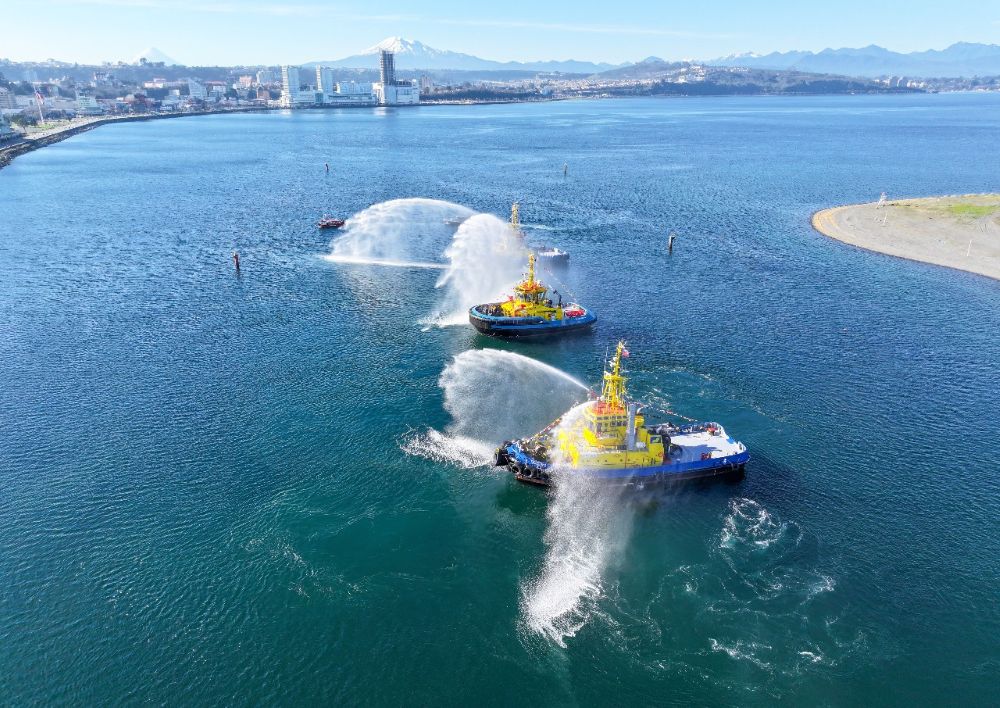Latin America’s First Electric Tugboat Christened in Chile
Latin America’s first electric tugboat, a joint endeavor by Empresa Nacional del Petróleo (Enap) and harbor towage services provider SAAM, has been christened in Chile, marking ‘a historic milestone’ for the country and the region.
The tug was christened Trapananda at a ceremony held at the Empormontt Passenger Terminal, following a dry run period and its journey from Tuzla in Türkiye, where it was built by Sanmar Shipyards, to Puerto Montt in Chile.
Designed by Robert Allan, the tug measures 25 meters in length and 13 meters in beam, with 70 tons of bollard pull capacity. It features two 2,100 kW electric azimuth thrusters and is powered by a 3,616 kWh capacity lithium-ion battery, distributed in two compartments. The batteries are remotely monitored by the manufacturer from Norway and have an estimated life of 10 years.

The electric tug will operate in one of the southernmost terminals in the world—Puerto Chacabuco, in the Aysén Region, supporting ship berthing and unberthing maneuvers, under SAAM and Enap’s partnership.
“The arrival of the Trapananda marks a before and after for our industry. We are moving decidedly toward cleaner, more efficient and environmentally friendly operations. This project is a vision for the future: we are developing solutions that not only tow and assist ships but also mobilizing a shift towards a truly sustainable logistics chain. On this path, we have found in Enap a partner with a shared vision,” said SAAM CEO Macario Valdés.
Enap’s Chairwoman, Gloria Maldonado, added: “At Enap we have a clear mandate: to ensure a reliable, efficient and quality energy supply for Chile. But today this mandate goes beyond compliance, it demands transformation. In our 80 years of history, we reaffirm our commitment to the country by innovating responsibly with a vision of the future.
“This new tugboat, the result of a fruitful partnership with SAAM, demonstrates that when the public and private sectors work together decisively, they can advance on complex challenges like decarbonization. This step is a concrete sign that we can accelerate the energy transition through collaboration and action.”

